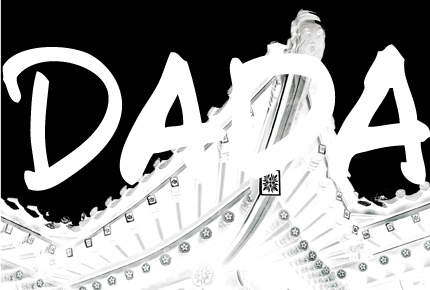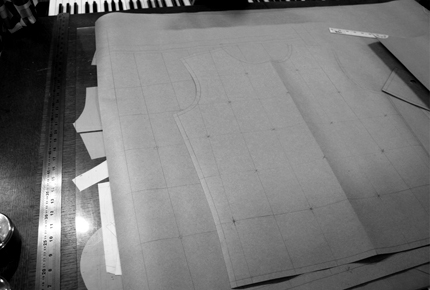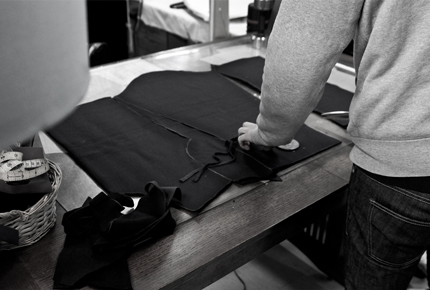-

-

落花 / Lost Ether
FTBW FIRST LP²
-

Soom, S∞m
FTBW KLTV
-

Ggumim, Meot
FTBW KLTV
-

Ways of Seeing
FTBW KLTV
| < | 1 | > |
|
INTERVIEW
Korean Creatives, Kyungbin Jeon
Fitbow Kollektiv’s founder Kyungbin Jeon's work is unique like his uncommon background as fashion designer. He says that fashion is the most effective ways to express one’s identity and culture, and it needs more diversity and experimental attitudes. Hypebeast.com Despite the look provided into FITBOW seen above, the brand’s founder Kyungbin Jeon comes from unconventional beginnings. An integral part in the growth and development of Korea’s hip-hop scene, Jeon would eventually embark on something often disassociated with hip-hop in the form of clothing design. Given the opportunity to speak with Jeon and seeing his apparel first hand, his approach is unlike many of his Korean peers. His design inspirations are derived from Korean culture, while many fellow Koreans are very much entrenched in the conceptualization of their lines thanks to outside influences. An underlying theme seems to be that South Korea seems to have all the tools for prosperity but is yet to find its proper direction. However, these are issues that are more a matter of time and something Korea will certainly overcome in the future.
Can you introduce yourself and what you do? I’m Kyungbin Jeon and I am the founder and the creative director of Fitbow Kollektiv. I started Fitbow in 2004 and the brands under Fitbow Kollektiv now include FITBOW and ARKESTRA.
Interview·1
|

meaningful messages that reflect how hiphop artists and MCs were thinking at that time. Although I’m not involved in the Korean hiphop scene any more, hiphop music is and has always been an important source of inspiration for me. To me, fashion industry in general seems to be only concerned with aesthetics and functionalities. Apart from aesthetic aspects, I wanted to approach clothes as a medium to spread ideas and values that I think are important. If hiphop artists expressed their ideas and messages through their words and music, I wanted to do the same through my clothes and designs. think the distinction is becoming quite meaningless nowadays. And also with Fitbow, I did not want to create a brand that fits into a certain category only. In that sense, ‘hybrid’ might be a better word to describe Fitbow in general. For example, we’ve launched “Street Dream” series in 2005 and it could fit into street fashion category. But in the same year, we also did “Corset”shirts which could easily fit into high fashion category. I think this was possible because we don’t do collections but instead work based on projects. This might sound a little unconventional to some but at least we do not feel pressured to create a series of unnecessary designs and clothes that have to share a same theme all the way each season. I personally do not like the idea of categorizing when it comes to creating, and I think creators and artists in particular must try to break the walls that exist between the genres. Interview·2
|
|
|

Is it hard to make a living in the arts in South Korea? A Korean identity factors a lot into your Interview·5
|

against them. Nowadays fashion editors and select shop buyers in Korea seem to expect more original and diverse designs in Korean fahion industry. However some of them are not very critical when it comes to accepting foreign lifestyle and fashion which I think have nothing to do with the lifestyles we have in Korea. And many buyers in Korea seem to favor local brands which mimic or imitate foreign brands which I often find contradictory. To me, design has to have certain roots and it should be original and true to itself. It is not just about how great it looks or how well things are made. The bottom line is that people should be able to feel consistency and sincerity when they see a certain work or design. were highly popular and now I find new styles that derive from American classics are gaining more popularity in Korea. And we can see that effect when we see some of the current collections by many local brands in Korea. But I remain a little skeptical as to how close and how authentic these Korean brands can get when compared to western brands. I think it’s very important to define and reinvent what is Korean fashion. For example, designers like Issey Miyake applied colors and details from Japan’s traditional costumes with such a flair that they were later described as “Japanese chic”. Visvim also uses and blends many of Japan’s traditional elements to their clothes and also to the interior designs of their shops. Korea has its own unique brilliance when it comes to culture and tradition and I think it’s yet to be discovered when it comes to fashion. Interview·6
|

With a strong manufacturing background, what does it mean for you to make clothing in Korea?
Interview·7
|
|
| < | 1 | > |